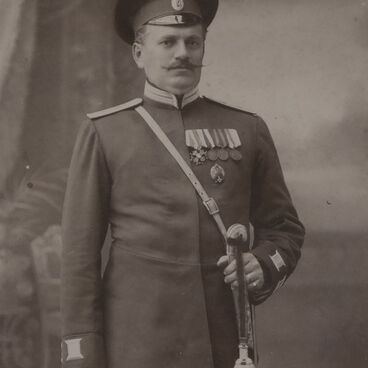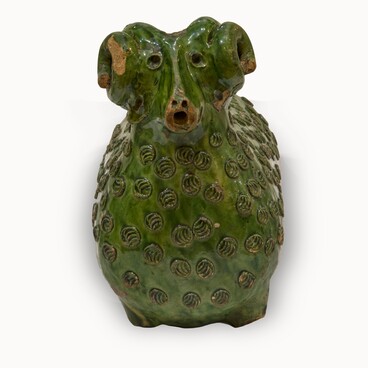Combs for combing wool at home were often used by the Don Cossacks. Such obsolete everyday items cannot be found in modern households and become treasures of museum collections, telling the story of forgotten lifestyles.
The 18th century was rich in events and was marked by dramatic changes in the customs and traditions of the Don Cossacks. First and foremost, these changes concerned their everyday activities and household. Before, Cossacks were not allowed to plow land, raise animals and poultry, or sow seeds. It was believed that such peaceful activities would distract Cossacks from their main purpose — military service. However, in the early 18th century, the Cossacks already started to take up farming and cattle breeding, and develop various handicrafts, including weaving and spinning.
Spinning was a seasonal pastime. It began after the last agricultural work in fall and ended in spring, with the Maslenitsa festival. Cossack women often gathered in one house, sang songs, reminisced about their youth, combed and spun wool, and instructed their daughters and younger sisters in the handicrafts. Girls were taught how to run the house from a very early age.
The skillful hands of a Cossack woman could process wool better than any tools. However, to obtain warm, soft, and elastic fibers, it was necessary to prepare the raw materials. Before spinning, wool was “beaten” by special devices on wooden racks and separated with hands or iron and wooden combs.
A comb was made of a single block of wood, usually aspen or birch. Craftsmen made a board with a width of 20–45 cm and cut a row of teeth with a length of 20–25 cm. The board merged into a handle with a length of up to one meter. The instrument was polished carefully to achieve a perfectly smooth surface.
To prepare wool, a Cossack woman would put a comb on the edge of a bench and sit on top of the handle with the teeth of the comb hanging from the bench. Then she would take a piece of fiber in her right hand, put wool onto the teeth and pull it through. Having separated the fibers on one side, she would work on the other side.
This combing method could be applied only to fibers of a certain length. The teeth straightened and separated fibers, sifting out any foreign impurities and shorter fibers.
The 18th century was rich in events and was marked by dramatic changes in the customs and traditions of the Don Cossacks. First and foremost, these changes concerned their everyday activities and household. Before, Cossacks were not allowed to plow land, raise animals and poultry, or sow seeds. It was believed that such peaceful activities would distract Cossacks from their main purpose — military service. However, in the early 18th century, the Cossacks already started to take up farming and cattle breeding, and develop various handicrafts, including weaving and spinning.
Spinning was a seasonal pastime. It began after the last agricultural work in fall and ended in spring, with the Maslenitsa festival. Cossack women often gathered in one house, sang songs, reminisced about their youth, combed and spun wool, and instructed their daughters and younger sisters in the handicrafts. Girls were taught how to run the house from a very early age.
The skillful hands of a Cossack woman could process wool better than any tools. However, to obtain warm, soft, and elastic fibers, it was necessary to prepare the raw materials. Before spinning, wool was “beaten” by special devices on wooden racks and separated with hands or iron and wooden combs.
A comb was made of a single block of wood, usually aspen or birch. Craftsmen made a board with a width of 20–45 cm and cut a row of teeth with a length of 20–25 cm. The board merged into a handle with a length of up to one meter. The instrument was polished carefully to achieve a perfectly smooth surface.
To prepare wool, a Cossack woman would put a comb on the edge of a bench and sit on top of the handle with the teeth of the comb hanging from the bench. Then she would take a piece of fiber in her right hand, put wool onto the teeth and pull it through. Having separated the fibers on one side, she would work on the other side.
This combing method could be applied only to fibers of a certain length. The teeth straightened and separated fibers, sifting out any foreign impurities and shorter fibers.



